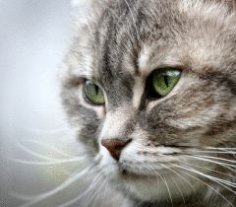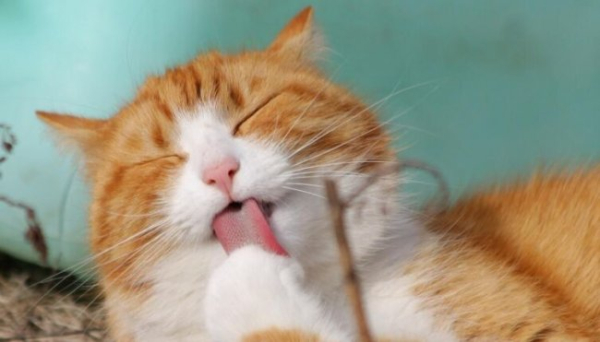
Isn't it hard to imagine a cat without whiskers, without this luxurious addition to their appearance? But whiskers aren't just the pride and joy of the feline family; they're also a vital organ, performing a number of indispensable functions. Whiskers serve as a guide during dark movements, a crucial hunting tool, and even a “weather vane” for a cat's mood. But first things first…
Whiskers are stiff, sensory hairs whose roots are located in a blood-filled sac called a sinus. The sensory corpuscles located on the walls of the sinus are stimulated by the slightest movement of the whiskers. Moreover, even the lightest touch is enough to trigger a reaction and excite numerous nerve cells. Sensory hairs are found not only on the cheeks, but also on the chin, above the eyes, and on the paws.
With the help of their whiskers, cats move confidently in the dark, avoiding any obstacles without touching anything. This is because when a cat moves, air waves are generated that are reflected off nearby objects. The cat can detect these waves with its whiskers, alerting it to an obstacle ahead. Thus, even in pitch darkness, cats feel at home.
With their paws, cats sense subtle vibrations in the floor, such as when a mouse scurries nearby. When pouncing on prey, their whiskers extend, monitoring its every movement. When a cat begins tearing its prey apart, it probes it to ensure it doesn't make a mistake and begins with the head. Photographs of cats carrying a freshly caught mouse in their mouths show the cat's whiskers wrapping around the animal's body, thus receiving information about the slightest movement, should the prey still be alive.
When a cat moves, its whiskers typically splay out in all directions. These distinctive feelers, coupled with its keen eyes, are excellent aids for perfect spatial orientation. A cat with damaged whiskers can only hope to hunt successfully in adequate light, and in the dark, errors are inevitable—for example, when delivering a precise bite to the prey's body (as a rule, a cat delivers a precise, fatal bite to the back of the head).
There's another interesting theory that the tips of a cat's splayed whiskers almost exactly match the width of its body. Thus, cats can immediately determine whether their body will fit through a narrow opening just by approaching it. Well, if we're talking about proportionally built animals, not fat-bellied cats, perhaps that's true…
Interestingly, the position of a cat's whiskers often depends on the animal's mood and the emotions it's experiencing. Experienced cat owners share their observations: a relaxed, resting cat's whiskers hang loosely; if the cat is interested or excited, the whiskers are widely spaced and point forward; if the cat is afraid or fighting off an attack, the whiskers are pulled back, as if pressed against the head.
In the villages, they say: the longer a cat's whiskers, the better it catches mice. A Maine Coon named Missy, the record holder for the longest whiskers, nearly twenty centimeters long, would probably have made a master mouser.





